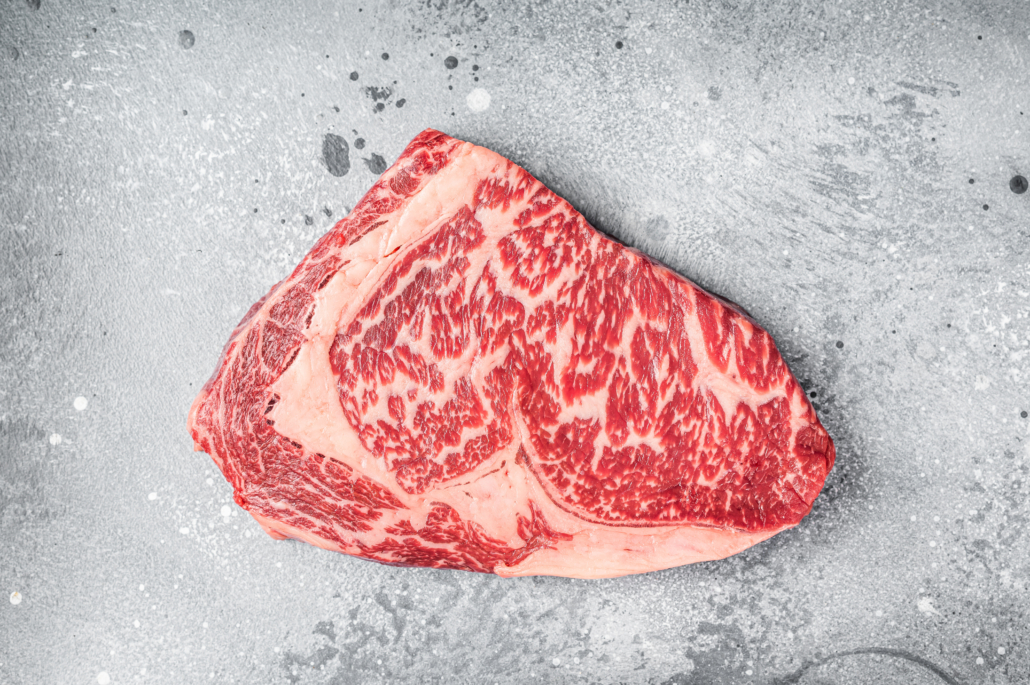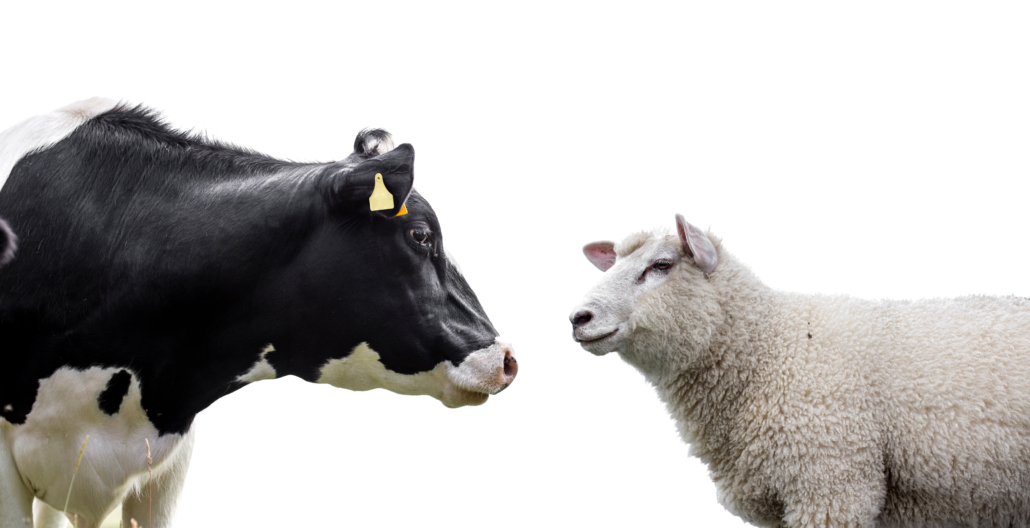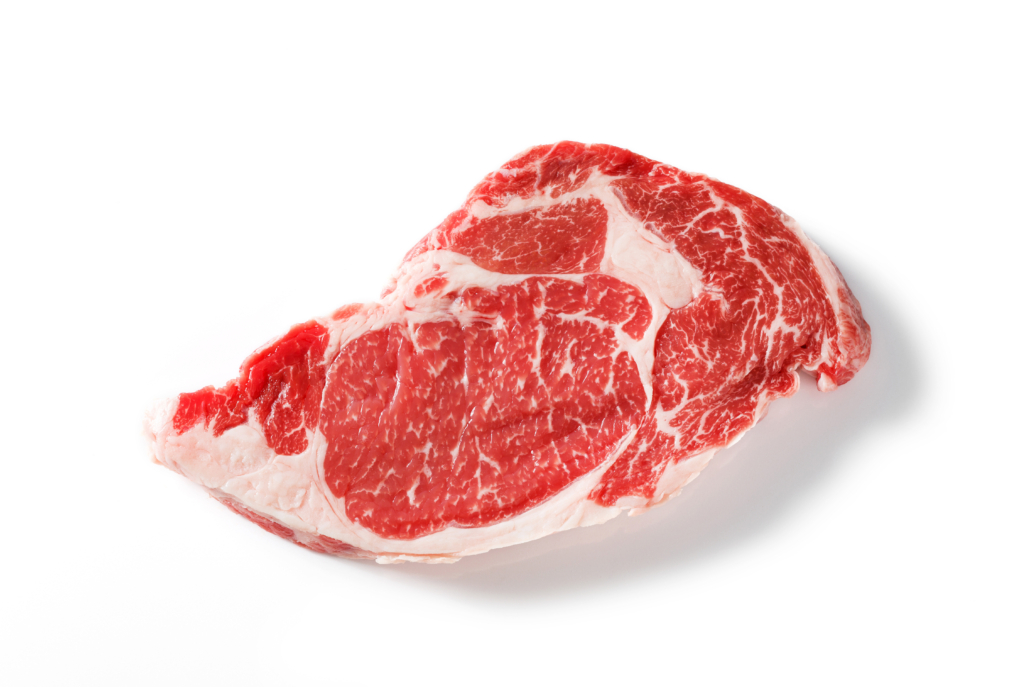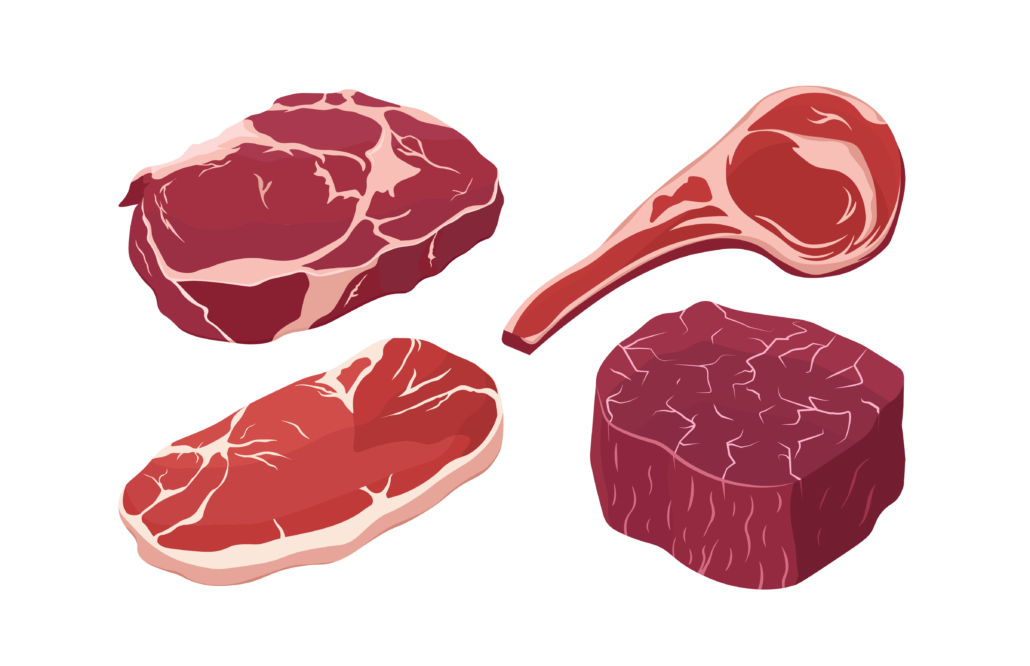We include products in articles we think are useful for our readers. If you buy products or services through links on our website, we may earn a small commission.
Grass Fed vs Grain Fed Beef: Which is Better?
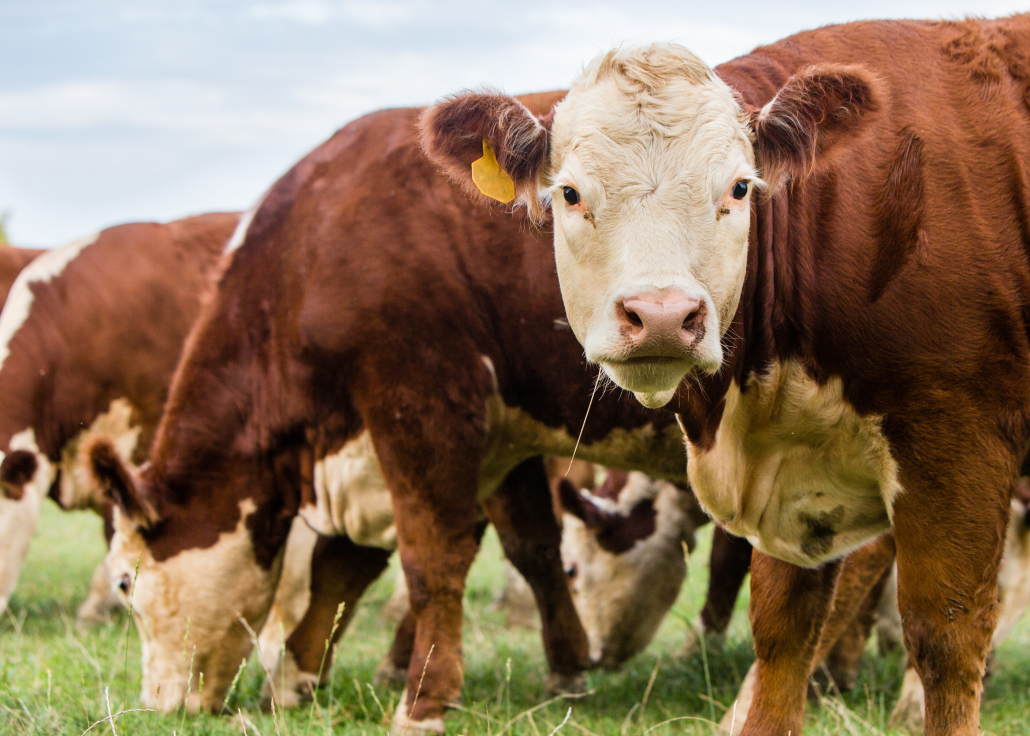
Table of Contents
- Defining Grain Fed Cattle
- Defining Grass Fed Cattle
- Grass Fed vs Grain Fed Difference #1: Fatty Acid Composition
- Grass Fed vs Grain Fed Difference #2: Taste
- Grass Fed vs Grain Fed Difference #3: Texture
- Grass Fed vs Grain Fed Difference #4: Health Benefits
- Is Grass Fed Beef Worth It? The Bottom Line
The debate between Grass fed vs. Grain fed beef can get personal. Grain fed beef enthusiasts attest to the marbling and juiciness of their steaks. While grass-fed proponents believe that grass-fed cows eat and grow the way nature intended, and therefore their meat is healthier.
Which side is right?
Let’s settle the grass-fed vs. grain-fed debate by rating both types of beef according to four important metrics:
- Fatty Acid Composition
- Health benefits
- Taste
- Texture
Defining Grain Fed Cattle
Most cows, 97% to be exact, who are born and raised in the U.S don’t exactly live happy lives — despite what clever marketers might tell you.
Conventional grain fed cattle born in the early spring are only allowed to be with their mothers in a natural environment for their first 7-9 months of life. After that, they’re moved to the feedlots.
And not just any feedlots. Most conventionally raised cattle spend their lives in the confined stalls of concentrated animal feeding operations (CAFOs). These cattle are then fed fattening soy and corn-based feed while simultaneously having their movement limited. To maximize growth and minimize the risk of illness, grain-fed cattle are given antibiotics, growth hormones, and other veterinarian-prescribed drugs.
Defining Grass Fed Cattle
Grass-fed cows, on the other handle, are generally treated better. Most grass-fed farming operations allow their cattle to move about relatively freely and eat fresh grass for at least part of the day. But the difference between grass-fed and grain-fed isn’t quite as clear-cut as it may first appear.
That’s because there’s no official standard for what defines the term “grass-fed.” There’s no governing body that guarantees that your “grass-fed beef” has been pasture-raised, allowed to freely graze outdoors. In some cases the grass-fed is a label applied simply to cows in feedlots that have been “finished” with grass.
That being said, grass-fed cows primarily eat a natural diet of grass, while grain-fed cows primarily eat an unnatural diet of corn and soy. But since the USDA doesn’t enforce terms like ‘grass-fed,’ the only way to know for certain how your meat was raised is to get to know the farmers you source from or buy online from a known grassfed farm.
Grass Fed vs Grain Fed Difference #1: Fatty Acid Composition
The old phrase ‘you are what you eat’ doesn’t just apply to humans.
What a cow eats on a daily basis can dramatically change its body composition, just as it can for us.
Grass-fed cattle tend to stay slightly leaner than grain-fed, as they’re eating a natural diet that allows for homeostatic weight regulation. This means grass-fed beef often contain fewer calories than ‘regular’ beef per serving.
The fatty acid profile of grass-fed beef is also different. While all beef contains a roughly equal blend of saturated and unsaturated fats, grass-fed beef contains fewer inflammatory polyunsaturated fatty acids (PUFA).
Grass fed beef also contains a better blend of naturally occurring trans fats, like conjugated linoleic acid (CLA), than grain fed does. CLA is known to possess numerous health benefits, including weight loss and improved body composition.
Here’s a closer look at the distinctive fatty acid compositions of grass fed and grain fed beef.
Monounsaturated fat
Grass fed beef and grain fed beef contain similar amounts of monounsaturated fatty acids, though grass fed beef may be richer in a particular monounsaturated fat called oleic acid. [10] This incredible fatty acid may reduce inflammation and promote increased fat burning.
Polyunsaturated fats
Perhaps the single biggest nutritional difference between grass fed beef and grain fed beef lies in their PUFA content.
A select few PUFAs, or polyunsaturated fatty acids, are essential in small amounts. But eating an overabundance of PUFA — as most people on a standard American diet (SAD) do — can cause inflammation, oxidation, and accelerated aging.
Thankfully, grass fed beef seems to have the ideal PUFA content. It’s 66-500% richer in the omega-3 alpha-linolenic acid, and 45% lower in total PUFA than grain fed beef.
These differences mean grass fed beef has a far superior omega 6:omega 3 ratio. While grain-fed beef’s ratio may be up to 16:1 (omega 6:3), grass fed beef’s ratio is roughly 1.4:1. Research has shown that a high dietary omega 6:3 ratio can contribute to health problems by destabilizing the cell membrane and impairing mitochondrial function.
Other fatty acids
As mentioned above, both grass fed and grain fed beef are rich in beneficial trans fats like conjugated linoleic acid (CLA).
Different analyses have identified varying levels of CLA in each type, so it’s possible that a cow’s CLA content depends on factors that beyond what it was fed.
And while grass fed beef is often promoted as healthy because of its supposedly lower saturated fat content, the grass fed variety is an especially good source of pro-metabolic, pro-mitochondria saturated fats like stearic acid. One analysis found that grass fed beef’s stearic acid levels were 36% higher than grain fed’s. Research in animals has correlated stearic acid intake with a faster metabolism and lower waist size.
Below is a chart that breaks down all these differences.
| Fatty Acid | Grain Fed Beef | Grass Fed Beef |
| Palmitic Acid | 27.7% | 27.5% |
| Stearic Acid | 12.8% | 17.5% |
| Oleic Acid | 30.9% | 37.6% |
| Linoleic Acid | 3.3% | 1.1% |
| Alpha-linolenic Acid | 0.2% | 0.8% |
| Total SFA | 47.7% | 50.4% |
| Total MUFA | 47.9% | 46.3% |
| Total PUFA | 3.5% | 1.9% |
Grass fed vs grain fed beef fatty acid composition:
Grass fed beef’s lower PUFA content and higher stearic acid content give it a clear advantage over grain fed beef.
Grass Fed vs Grain Fed Difference #2: Taste
The difference in taste between grass fed beef and grain fed beef is highly debated.
To the modern palate, grain fed beef may taste richer and sweeter than other alternatives — but such a palate is hardly natural. It’s been shaped more by frankenfoods and artificial sweeteners than it has by genuine nutritional needs or cravings.
Grain fed beef’s sweetness is a direct result of what it’s fed: a fine-tuned mix of corn, corn byproducts, and soy, designed specifically to promote growth and sweetness at the expense of other factors.
Grass feed beef, however, is fed a diet that stays faithful to nature’s design. Just as a human fed their natural animal-based diet will usually be thinner than one fed the SAD, cows fed a natural grass-based diet will be leaner than those on the corn + soy mix. Grass fed steak often has less marbling and a less buttery flavor than grain fed cuts.
Some people describe grass fed meat as being tough or ‘gamie,’ while others say it tastes higher in minerals. Still, other people find they prefer grass fed beef’s more complex, earthier flavor.
Grass fed vs grain fed taste:
The majority of Americans prefer the sweeter taste of grain fed beef — but that’s not necessarily a good thing.
Grass Fed vs Grain Fed Difference #3: Texture
Grass fed beef may also have a gamier texture than grain fed beef.
Because of its lower levels of fat marbling, grass fed steaks may have a rougher, more chewy texture than grain fed steak. They may also be more susceptible to overcooking — which can make it too dry or chewy. (If this happens to your steak, just add butter or tallow.)
Grass fed beef even looks different. Its fat tends to have a light yellow hue from all the beta carotene the cattle are ingesting through grass. The meat itself is often darker and juicier compared with the light-pinkish color of conventional grain fed beef.
Grass fed vs grain fed texture:
The textures of grass fed and grain fed beef may be different, but that doesn’t mean one is necessarily better than the other.
Grass Fed vs Grain Fed Difference #4: Health Benefits
Both grass fed beef and grain fed beef are concentrated sources of important nutrients.
Loaded with bioavailable B vitamins, iron, zinc, selenium, and protein, both types of beef contain almost every nutrient you need to survive and thrive. They’re also rich in rarely-acknowledged nutrients, like carnosine, which promote muscular strength and health. And it should go without saying that beef is a vital part of any low-carb or carnivore diet.
If grain fed beef is good for you, then grass fed beef is simply great. The health differences between the two can be placed into four major categories:
- Better fatty acid profile
- Better antioxidant profile
- Higher in micronutrients
- Lower in contaminants
We already covered the first of these major differences, so let’s now take a look at the remaining three.
Better antioxidant profile
Grass fed beef’s grass-based diet means it’s much higher in antioxidants — particularly vitamins A and E.
In addition to reducing general inflammation and aging, these antioxidants confer specific health benefits. Vitamin A is known for its role in skin and eye health. Vitamin E, on the other hand, is incorporated into cell membranes in order to protect them from all sorts of oxidative stress.
Higher in micronutrients
Grass fed beef is also higher in important micronutrients than beef of the grain fed variety.
The grass-based diet of these cattle is loaded with vitamin K1, which they then convert into Vitamin K2 in the way that only ruminant animals can.
Our bodies use vitamin K2 to foster bone health and protect against bone diseases like atherosclerosis. Considering many people today are deficient in this crucial vitamin, grass fed beef could provide a simple way to safeguard bones and joints.
Lower in contaminants
Just as important as all the nutrients in grass fed beef are all the toxins that are likely absent.
Grass fed beef is lower in phytoestrogens than grain fed beef — that’s because cattle who are fed grass don’t get exposed to phytoestrogen-rich soy feeds like others do.
While any type of beef will be lower in phytoestrogens than soy products, grass fed beef is the very safest choice. (Avoiding phytoestrogens is especially important if you’re pregnant or trying to become pregnant.) Grass fed beef may also be lower in antibiotics, growth hormones, and glyphosate than other varieties.
One final advantage of grass fed beef: there’s some evidence that animals who live a lower-stress life produce more nutritious meat.
Highly stressed grain fed beef, on the other hand, may not be as ideal. Once ingested, the polyamines found in a stressed animal may be able to cross through a person’s blood-brain barrier and confer an unknown amount of stress to humans. Grass fed vs grain fed health benefits:
While both types of beef are highly nutritious, grass-fed beef is a veritable superfood. It has more antioxidants and fewer potential toxins than the alternatives.
Is Grass Fed Beef Worth It? The Bottom Line
Let’s recap the basics: Though grass-fed beef has a generally healthier nutrient profile, conventionally raised, grain fed beef is still a great source of vitamins, minerals, and beneficial fatty acids.
Grass-fed beef, on the other hand, can be prohibitively expensive in some areas. If the mere thought of affording it is stressful, you might be wise to stick with conventional beef. Differences in taste and texture mean you might prefer grain fed beef anyways.
Ultimately, the choice to go grass fed or grain fed depends on a combination of your preferences, ideals, location, and means.
Choose whatever option is best for your holistic health — or just try both and see which you like better.












